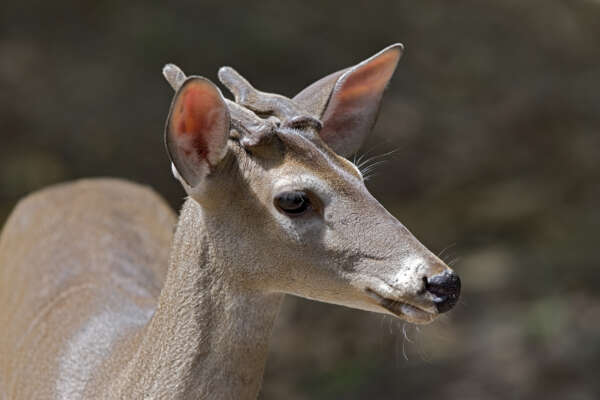
Biology
Length: 4-5 feet
Height: 3 ft
Weight: 55 - 110 lbs
Lifespan: 15 - 20 years
# of offspring: 1-3
Height: 3 ft
Weight: 55 - 110 lbs
Lifespan: 15 - 20 years
# of offspring: 1-3
Range & Habitat
Geographic Range: North, Central, and South America
Habitats: Tropical broadleaf forests; lowland savanna; pine and oak woodlands; riparian forests; montane forests
Habitats: Tropical broadleaf forests; lowland savanna; pine and oak woodlands; riparian forests; montane forests
Food & Function
Diet: Grasses, foliage and fruits
Lifestyle: Crepuscular; Terrestrial
Ecological roles: Prey species. Seed dispersers. Plant diversity influencer.
Lifestyle: Crepuscular; Terrestrial
Ecological roles: Prey species. Seed dispersers. Plant diversity influencer.
White-tailed Deer
(Odocoileus virginianus)
Spanish: Venado
The white-tailed deer is the larger of the two species of deer found in Belize. The same species is found throughout the Americas; the deer populations closer to the Equator are much smaller than their counterparts in the north and south.
Male deer (bucks) regrow their antlers every year leading up to the mating season. They are used for defense and challenging other bucks for mates. They then shed their antlers once testosterone levels fall after mating season.
They are an important prey species for both jaguars and pumas in Belize.
The closed season for hunting deer (with permits) is from October 1st to June 30th (males), and March 1st to June 30th (females)
Fun Facts
- Their famous white tail flicks up when they are alert or alarmed, and is used to warn other members of their herd of danger
- White-tailed deer can run up to speeds of 30mph
